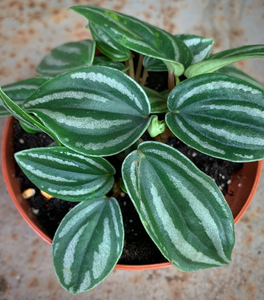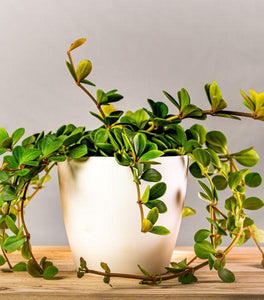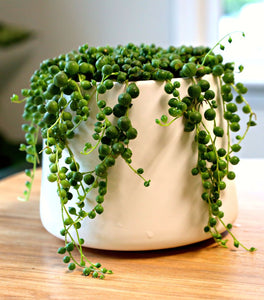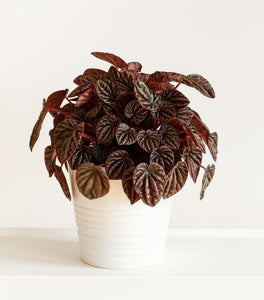Images Depict Mature Plants
Peperomia Emerald Ripple Plants for Sale Online
Peperomia Emerald Ripple (Peperomia caperata) plants are known for their heart-shaped, deeply rippled leaves. Their foliage is a deep green color, not to get confused with Peperomia Burgundy Ripple, which has deep burgundy foliage. On occasion, your Emerald Ripple houseplant may produce thin, cream-colored flower stalks. Overall this plant grows in a beautiful mounding habit, making them excellent for small places in your home.
Even though your Peperomia caperata is similar to a succulent, it can grow in low light conditions and is easy to take care of. However, if your plant does not receive enough sun, it will become leggy and wilt. This Peperomia cultivar makes for the perfect beginners' houseplant.
| Hardiness Zone: | 9-11 |
|---|---|
| Mature Height: | 11"-18" |
| Mature Width: | 30"-36" |
| Sunlight: | Low light to bright indirect light |
| Habit: | Mounding habit, densely branching, insignificant flower |
| Flower Color: | Inflorescence |
| Foliage: | Deep green with rippled texture |
| Soil Condition: | Likes to dry out some between watering |
| Water Requirements: | If unsure, do not water |
| Uses: | Attractive plant to be featured or in the background of any room in the house, does well with minimal care |
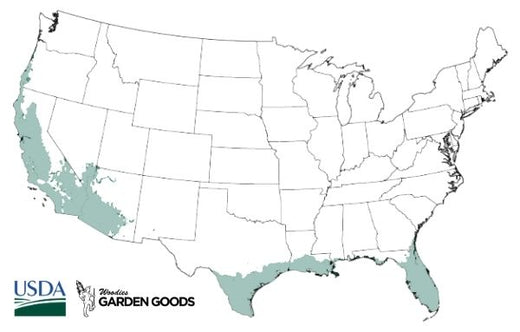
How to Care for Peperomia Emerald Ripple
Be sure to read our planting instructions to ensure a healthy and happy plant for years to come!

How Much Sunlight Does my Peperomia Emerald Ripple Plant Need?
Peperomia Emerald Ripple plants thrive in indirect bright light conditions. These plants can survive in low light conditions; however, they cannot survive in direct, bright light. Direct sunlight will scorch your plant's leaves and stunt their growth. We recommend placing your houseplant in an east or north-facing windowsill because this is where it will receive the best indirect, bright sunlight without overexposure. Also, if your home does not get enough bright indirect sunlight you can use fluorescent grow lights in place of natural sunlight. Your plant will thrive and grow happy under these lighting conditions as well.
How Often Should I Water my Emerald Ripple Peperomia?
Peperomia Emerald Ripple's growing season is spring through fall, and during this time, you must keep a consistent yet moderate watering schedule. These houseplants do not mind drying out every so often. You should not water your plant again until the top inch of potting soil is completely dry. Once your plant's soil is dry, water it thoroughly and from the bottom. Doing so will avoid getting their semi-succulent leaves wet and damaged. If you are unsure if you should water your plant, wait a day or two to be on the safe side. Also, make sure you do not overwater your plants. Overwatering Peperomia could potentially cause root rot disease. This disease happens when your plant's roots sit in standing water for too long and begin to rot.

What is the Best Soil for My Emerald Ripple Peperomia?
We recommend using a peat-based potting mix like African Violet soil or a soil mix made specifically for succulents. It is essential that your plant's soil conditions are well-draining and your plant is in a pot with excellent drainage holes. Well-draining soil will prevent any risk of root rot disease if you accidentally overwater your plants. Any excess water that your plant does not need will drain through the soil and out of the pot through the drainage holes. If the potting soil is not well-draining and your plant's container does not have drainage holes, your plant could get root rot disease. If this disease is not caught quickly, it can kill your plant.

How Often Should I Prune My Peperomia Emerald Ripple Plant?
Peperomia Emerald Ripple plants do not need to be pruned often, but if you want your plant to keep its bushy appearance, you can prune at any point to maintain the shape. New growth will appear from any nodes on the stem directly below the cut you made. Because these are small houseplants, pruning for a bush appearance will make it look rounder and more mounding because this is already the shape it grows in. Also, if your plant has any dead or dying leaves, stems, etc., you can prune them off at any time. You should use sharp and clean pruning shears.











